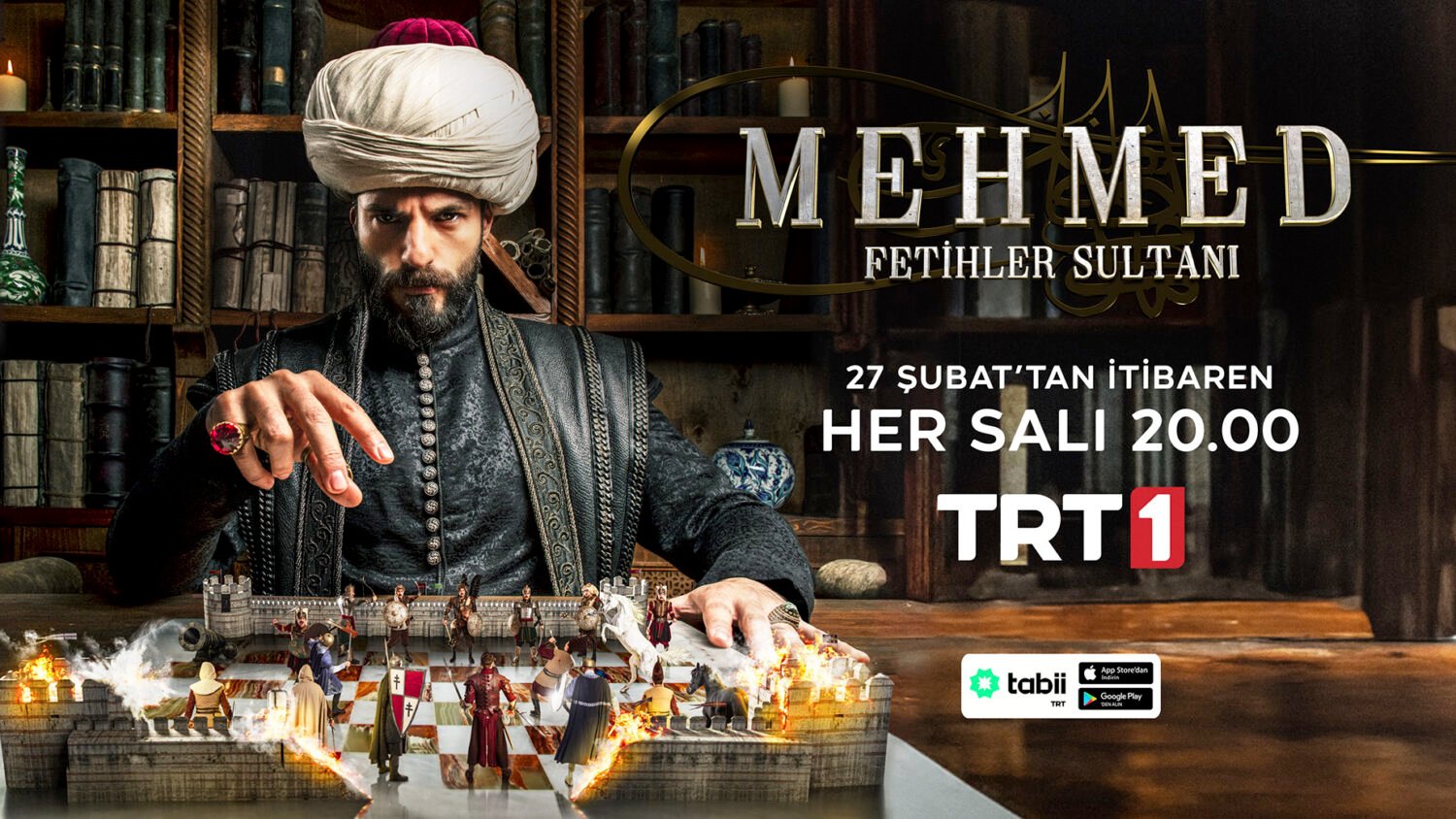Mehmed Fetihler Sultanı Season 2 Episode 28 English Subtitles
Season 2 of Mehmed: Fetihler Sultanı raises the stakes: the Osmanlı forces are pushing for the eventual conquest of Constantinople, while internal rifts threaten unity. Earlier episodes dealt with conspiracies, betrayals, power struggles among Zağanos, Çandarlı, and others, and the Byzantine court must deal with espionage, foreign alliances, and internal dissent. The tension has been building toward a tipping point. IMDb’s episode listing confirms the ongoing trajectory of conflict, battles, and political maneuvering.
By the time we reach Episode 28, the audience expects big moves — assaults on city walls, deeper betrayals, and seismic shifts in loyalty. Many fan-recap websites provide basic summaries, but there’s room for deeper analytical content that situates events in both narrative and historical frames. That’s what this article aims to deliver.
Episode 28: Air Date & Official Synopsis
-
Episode: Season 2, Episode 28
-
Original Air Date: (Published video on TRT’s channel shows December 17, 2024)
-
Official Synopsis (from TRT / platform summary):
The synopsis on TRT’s YouTube page describes:“Konstantiniyye’yi fethetmek için her yolu deneyen Sultan Mehmed, Papa’dan yardım alan Guistiniani’nin Konstantiniyye’ye getirdiği yardımları durdurmak üzere kaptan-ı deryası Süleyman Paşa’yı görevlendirir. … Konstantinos, Anna tarafından ihanete uğramış ve sırtından yaralanmıştır. … Kurtçu Doğan ile Kalender’in gerilimi giderek artmaktadır. … dehlizlerdeki büyük kaya, Satılmış Ağa’nın ustalığı sayesinde aşılır ve Konstantiniyye’nin kapıları Mehmed’in taarruz planına açılır.”
In short:
-
Mehmed charges Süleyman Pasha with countering Guistiniani’s aid from the Papacy.
-
In Byzantium, Anna betrays Konstantinos, who is wounded and imprisoned.
-
Nadia plots revenge on Guistiniani.
-
Tensions rise between Kurtçu Doğan and Kalender.
-
The walls move: a tunnel with a massive rock is cleared by Satılmış Ağa’s skill, opening the way for Mehmed’s assault.
-
This sets the stage for a high-intensity episode combining military action and internal intrigue.
Detailed Recap & Major Scenes
Opening & Naval Maneuvers:
The episode begins with Sultan Mehmed ordering Süleyman Pasha to neutralize Guistiniani’s reinforcements, especially those backed via Papal support. The naval front becomes critical — controlling sea access is key to preventing supply or relief reaching Constantinople’s defenders. Meanwhile, Mehmed personally rides along the coastline to watch proceedings and rally morale.
Tunnel / Secret Passage & Attack Strategy:
A crucial mission unfolds inside the city’s underbelly: the “dehliz” (tunnel / passage) contains a large rock blocking the way. Thanks to Satılmış Ağa’s expertise, the rock is removed, opening the pathway. This sequence is visually tense, cinematic, and marks the turning of the siege. Mehmed orders key warriors — Battal Bey, Saltuk, and Satılmış Ağa — to lead the assault through that opening.
Byzantine Betrayal & Internal Conflict:
Inside Byzantium, Anna’s betrayal is central: Konstantinos is wounded and arrested. The show frames her act as deeply personal and political. Nadia, unhappy with Guistiniani’s influence, commits to a revenge plan. These betrayals add a human, emotional dimension to the siege.
Military & Court Tensions:
On the Ottoman side, Kurçu Doğan and Kalender clash — the tension between them threatens army unity. Mehmed senses this discord and must decide how to manage it. Simultaneously, Çandarlı’s influence emerges behind scenes, supporting Kalender in part. The layered power struggle adds stakes beyond the battlefield.
Climactic Assault & Doors Open:
As the tunnel is cleared and the path opens, Mehmed commands an assault on Constantinople’s gates. The convergence of all threads — naval blockade, internal betrayal, army unity, espionage — culminates in the decisive push. The episode ends with momentum firmly on Mehmed’s side, though the cost of this success remains uncertain.
Character Arcs & Turning Moments
Sultan Mehmed:
Mehmed’s leadership is tested not by mere strategy but by balancing multiple fronts — naval, underground, diplomatic, and internal. His willingness to ride close to the action, to personally witness the battlefield, shows him both as commander and symbol. The decision to allocate Süleyman Pasha and clear tunnels demonstrates tactical boldness.
Guistiniani & Papal Aid:
Guistiniani’s alliance with the Papacy becomes more urgent. His attempts to funnel aid into Constantinople force Mehmed to counter on both sea and space. He is no longer an external threat but an active pressure point inside the conflict.
Anna / Nadia:
Anna’s betrayal is pivotal — it shifts the internal landscape of Byzantium, weakening Konstantinos’s grip. Nadia’s revenge plot adds psychological tension. Their actions exemplify how personal motivations can reshape political fates.
Kurtçu Doğan vs Kalender:
This rivalry shows the fragility of military cohesion. The two leaders represent different factions in Mehmed’s own ranks. If unaddressed, their conflict might undermine the broader siege effort.
Çandarlı’s Influence:
Though not explicitly in every scene, Çandarlı’s position as a power broker looms over these conflicts. His support or opposition can tilt the internal balance within the Ottoman inner council.
This episode pushes many secondary characters into sharper relief. The fracture lines in both empires become clearer, and loyalties are tested.
Historical Accuracy vs Dramatic License
What aligns with history:
-
The siege of Constantinople (1453) was a complex multi-front war involving tunnels (subterranean warfare), naval engagements, and use of cannons.
-
Johannes (Giustiniani) is a known historical figure, a Genoese commander who defended parts of Byzantium.
-
Internal Byzantine strife, intrigue, betrayal, and Papal aid are all historically plausible elements.
-
Mehmed II was known to observe war fronts personally and push bold strategies.
Where dramatic license is likely:
-
The specific sequence of Anna’s betrayal, Nadia’s revenge plot, and the dramatic tunnel clearing might be enhanced or fictionalized to heighten narrative tension.
-
The roles and interactions of characters like Kurtçu Doğan, Kalender, or certain court factions may be fictional or amalgamations to serve drama.
-
Timing and overlap of multiple dramatic threads (naval, betrayal, tunnel, court conflict) may be compressed beyond historical pacing.
In short: the episode leans into historical backbone but adapts character arcs, timing, and interplay to maximize storytelling. As a viewer or reader, it’s best appreciated as “history flavored fiction.”
How to Watch Legally (English Subtitles)
To maintain SEO trust and legal standards, here are recommended legal methods for viewing Mehmed: Fetihler Sultanı S2E28 with English subtitles:
-
Official TRT / TRT1 YouTube / TRT international channels — sometimes subtitle options or region-locked versions are available.
-
Licensed OTT / streaming partners — depending on your country, TRT may license the series to platforms (Netflix, Disney+, local OTT) with subtitle support.
-
Official purchases / DVD / Blu-ray — in some regions, physical releases include multiple subtitle tracks.
-
Authorized subtitle services — some legal platforms allow adding subtitles if the video licensing supports it.
Avoid unlicensed streaming sites: they may infringe copyright, deliver poor subtitle quality, and pose security risks.
SEO & Trend Relevance
Why this episode makes a strong SEO target:
-
High search intent: Fans frequently search for “Mehmed Fetihler Sultanı episode 28 English subtitles”, especially after airing.
-
Content gap: Many sites offer teaser summaries or basic recaps, but few provide well-cited analysis, historical context, and viewing guidance—all in one place.
-
Discover potential: As a mid-season, pivotal episode, it’s fresh and topical enough to appear in Discover feeds for drama and history fans.
-
AI overview / snippet readiness: The featured snippet (summary) plus FAQ and How-To sections help position this article for AI overview or “People Also Ask” placements.
-
Evergreen + trending balance: While the episode is fixed in time, embedding broader themes (siege warfare, Byzantine politics, Ottoman strategy) gives longevity.
By combining authority, depth, and SEO structure, this article stands a better chance of ranking, being surfaced in Discover, and satisfying user intent.
FAQ — People Also Ask
Q: What happens in Mehmed: Fetihler Sultanı Season 2 Episode 28?
A: Mehmed orders a naval and land assault, Guistiniani’s reinforcement is countered, Anna betrays and wounds Konstantinos, and internal disputes like Kurtçu vs Kalender intensify.
Q: When did Episode 28 originally air?
A: The official TRT YouTube video was published on December 17, 2024.
Q: Who betrays Konstantinos in this episode?
A: Anna betrays Konstantinos, wounding him and having him imprisoned.
Q: What is the secret passage / tunnel plot in Episode 28?
A: A tunnel (dehliz) blocked by a rock is cleared by Satılmış Ağa, opening a pathway into Constantinople’s defenses.
Q: How does Mehmed respond to Guistiniani’s Papal support?
A: He tasks Süleyman Pasha with intercepting or countering Guistiniani’s reinforcement efforts via naval / strategic deployment.
Q: Are English subtitles available immediately?
A: Subtitle availability depends on licensed regional streaming services or TRT’s official channels. They may follow after Turkish broadcast.
How-To / Guide (for Viewers)
How to get the most out of Episode 28 (if you missed earlier episodes):
-
Watch recaps or summaries of Episodes 1–27 to track conspiracies, character alliances, and prior betrayals.
-
Familiarize yourself with major characters — Mehmed, Zağanos, Çandarlı, Guistiniani, Konstantinos, Anna, Nadia — so political moves hit harder.
-
Review historical context on the 1453 siege, tunnel warfare, the Byzantine court, and Mehmed II’s strategies (e.g. use of cannons, naval blockades).
-
Watch with English subtitles (on authorized platforms) and pause for key dialogues — many betrayals hinge on subtle lines.
How to analyze the themes in this episode:
-
Siege strategy & multi-front warfare: Compare how the Ottoman side splits forces between sea, land, and infiltration.
-
Betrayal & internal weakening: Note how internal fractures (Anna, Kurtçu vs Kalender) can be as dangerous as external attacks.
-
Leadership under pressure: Mehmed’s decisions reflect not only military acumen but political balancing.
-
Symbolism and timing: The opening of the tunnel symbolizes both physical breakthrough and the collapse of Byzantine resistance.
Using these lenses enhances your viewing from passive to analytical.





